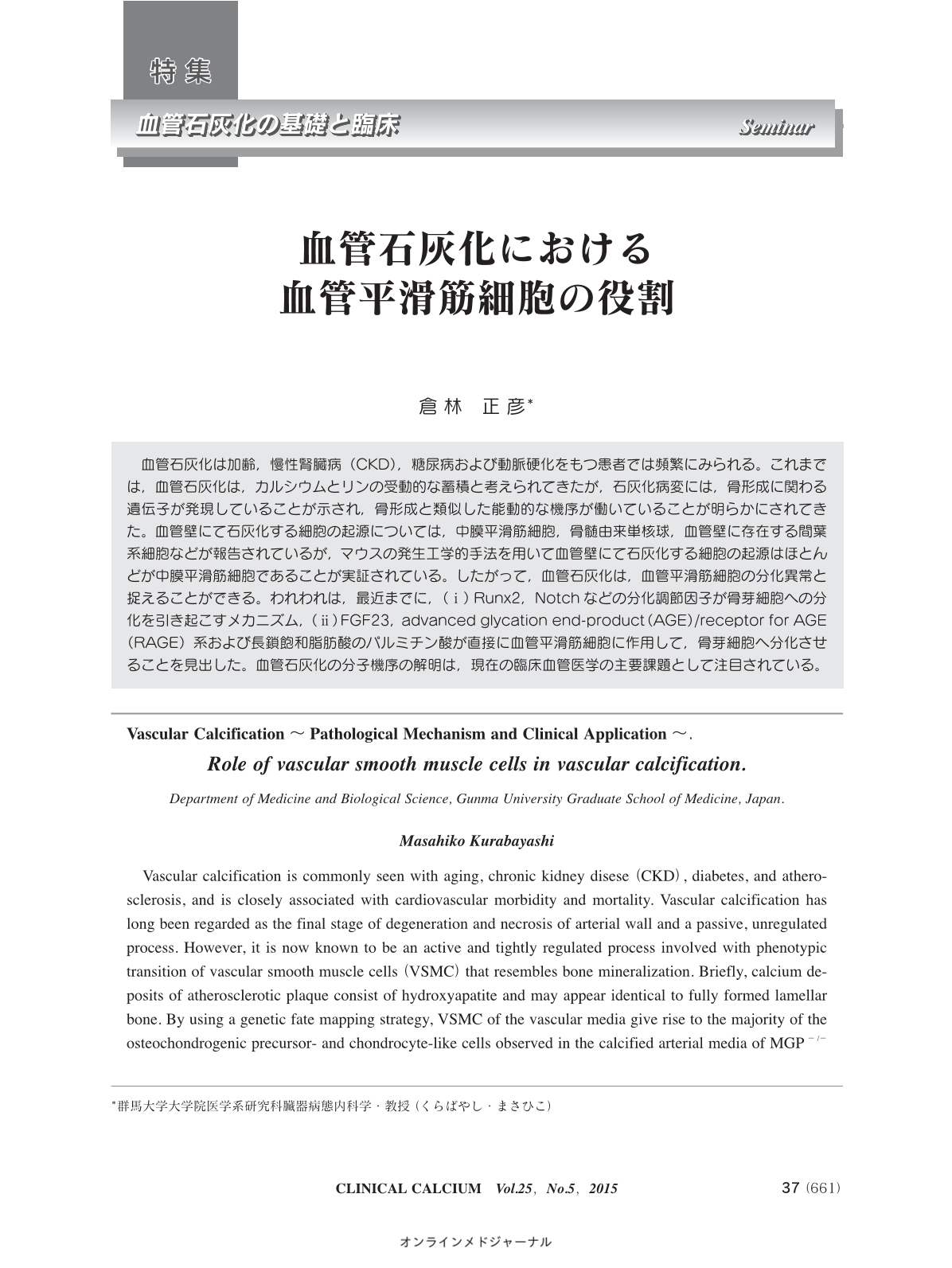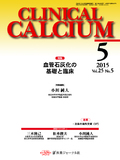Japanese
English
- 有料閲覧
- Abstract 文献概要
- 1ページ目 Look Inside
- 参考文献 Reference
血管石灰化は加齢,慢性腎臓病(CKD),糖尿病および動脈硬化をもつ患者では頻繁にみられる。これまでは,血管石灰化は,カルシウムとリンの受動的な蓄積と考えられてきたが,石灰化病変には,骨形成に関わる遺伝子が発現していることが示され,骨形成と類似した能動的な機序が働いていることが明らかにされてきた。血管壁にて石灰化する細胞の起源については,中膜平滑筋細胞,骨髄由来単核球,血管壁に存在する間葉系細胞などが報告されているが,マウスの発生工学的手法を用いて血管壁にて石灰化する細胞の起源はほとんどが中膜平滑筋細胞であることが実証されている。したがって,血管石灰化は,血管平滑筋細胞の分化異常と捉えることができる。われわれは,最近までに,(i)Runx2,Notchなどの分化調節因子が骨芽細胞への分化を引き起こすメカニズム,(ii)FGF23,advanced glycation end-product(AGE)/receptor for AGE(RAGE)系および長鎖飽和脂肪酸のパルミチン酸が直接に血管平滑筋細胞に作用して,骨芽細胞へ分化させることを見出した。血管石灰化の分子機序の解明は,現在の臨床血管医学の主要課題として注目されている。
Vascular calcification is commonly seen with aging, chronic kidney disese(CKD), diabetes, and atherosclerosis, and is closely associated with cardiovascular morbidity and mortality. Vascular calcification has long been regarded as the final stage of degeneration and necrosis of arterial wall and a passive, unregulated process. However, it is now known to be an active and tightly regulated process involved with phenotypic transition of vascular smooth muscle cells(VSMC)that resembles bone mineralization. Briefly, calcium deposits of atherosclerotic plaque consist of hydroxyapatite and may appear identical to fully formed lamellar bone. By using a genetic fate mapping strategy, VSMC of the vascular media give rise to the majority of the osteochondrogenic precursor- and chondrocyte-like cells observed in the calcified arterial media of MGP-/- mice. Osteogenic differentiation of VSMC is characterized by the expression of bone-related molecules including bone morphogenetic protein(BMP)-2, Msx2 and osteopontin, which are produced by osteoblasts and chondrocytes. Our recent findings are that(i)Runx2 and Notch1 induce osteogenic differentiation, and(ii)advanced glycation end-product(AGE)/receptor for AGE(RAGE)and palmitic acid promote osteogenic differentiation of VSMC. To understand of the molecular mechanisms of vascular calcification is now under intensive research area.



